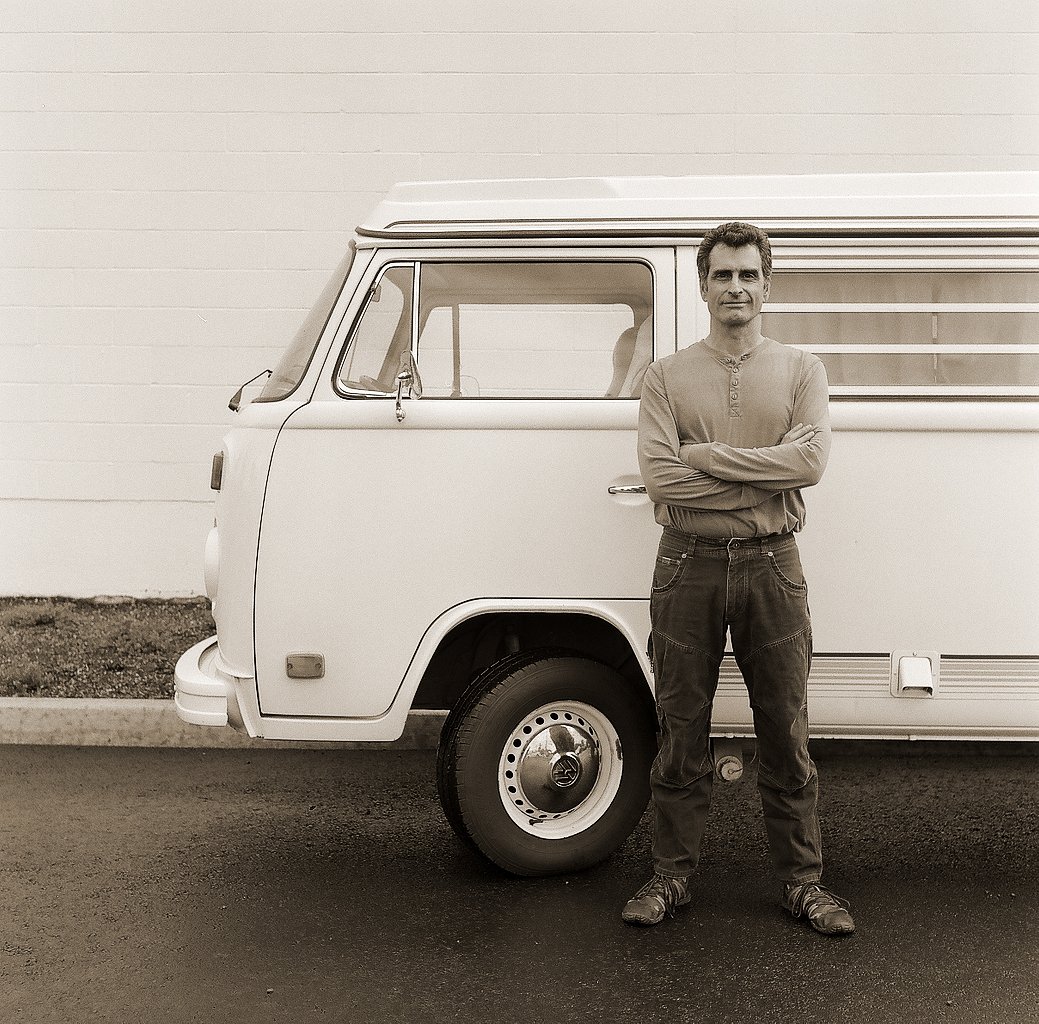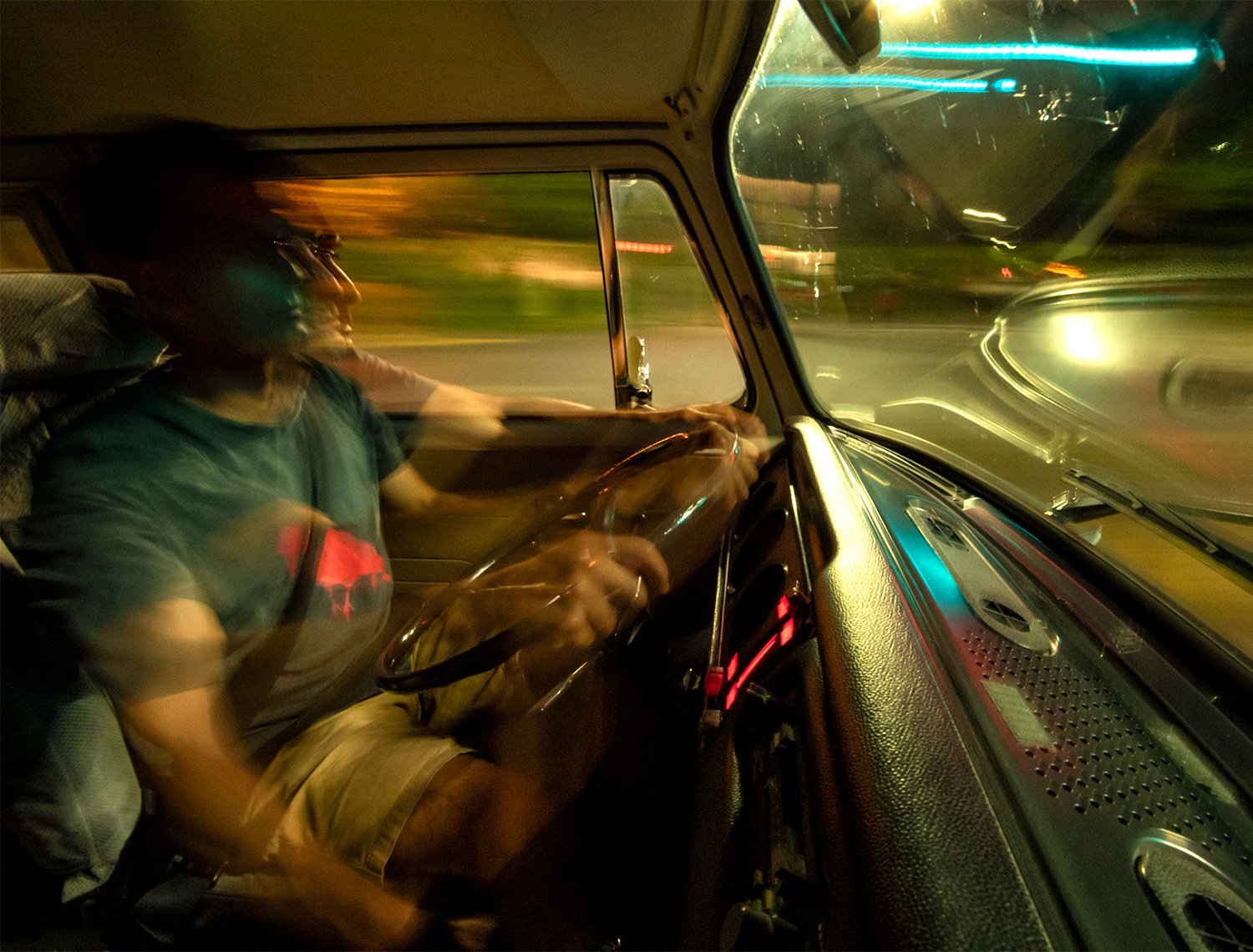“The Djinn” - Digital, white balance set to tungsten, orange-gelled strobe to neutralize blueness in key light. My friend Lloyd and I were playing with strobes at Light Rider Studios - thanks to him for being such a willing model! Extra kibble for Lloyd! 😁
Since I’ve started using film as well as digital, I find that color film is sensitizing me to color in a way that digital photography hadn’t. To me, a roll of color film feels like a limited resource. Because there are only 36 shots on a roll, I feel a sense of preciousness with film that I don’t with a digital camera, so I find myself paying a lot more attention to how the color gets used. I horde my color exposures, looking for compositions that specifically feature color. My eye is getting more attuned to color as a result.
Expired (late `80s?) Kodacolor VR ISO 1000 shot at ISO 100. Looking for color on the street.
At Light Rider Studios we’re all about experimentation and I’ve been experimenting with different types of color film. Koa tries and supplies lots of different films and encourages members to try them too. I’m always trying to tune into the alien channel and some films really excel at that.
Lomography LomoChrome Turquoise ISO 100-400. A film experiment prompted by Light Rider.
“Blue Spores” - Lomography LomoChrome Turquoise ISO 100-400 at night.
White Balance: Digital photographers don’t have to pay attention to white balance unless they want to. They can leave the camera on Auto WB and edit the raw file later in post-processing. But in film white balance is hard-wired, and different films are designed for different lighting conditions. Daytime films are balanced for sunlit conditions, and Indoor films may be balanced for warm yellow tungsten light bulbs. Films intended for night might be balanced for sodium street lights, which are even more orange than tungsten lighting. With film I need to be very conscious of white balance.
CineStill 500T tungsten-balanced night film. This partially neutralizes the warm sodium lighting.
I’ve started playing more with what I’ll call “white balance cross-shooting” - shooting with “wrong” white balance setting to promote strangeness or some other feeling.
CineStill 500T tungsten-balanced night film shot in foggy conditions. This warms everything.
My experiments in film white balance are leaking back into my digital work as well. Partly as a preview to what film exposures might look like, I sometimes set my digital camera to tungsten (or other) white balance and use the look. I think the blue tones add to the sense of cold, alien light.
Digital - white balance set to 3400K (warm tungsten). Cold and harsh, just what you’d expect from an old penitentiary.
I’m using gelled strobes to selectively change color temperature within an image. Here’s another example using Gatsby instead of Lloyd.
Digital - White balance set to Tungsten for overall blue appearance, strobe gelled with orange to neutralize blue on the (handsome) model.
I shot the same scene with daylight-balanced color film. What a great model! He sat still even when I went into the house for another camera. Extra kibble for Gatsby! 😺
Reformed Day Shots ISO 400 film (daylight-balanced) with orange-gelled strobe. Colors look natural in the background but the (distracted) model is warm-toned.
Using color film is having a big impact on the way I see and use color in my photographs. It’s making me more aware of color and it’s helping me more effectively create the mood and subject I want.
























































